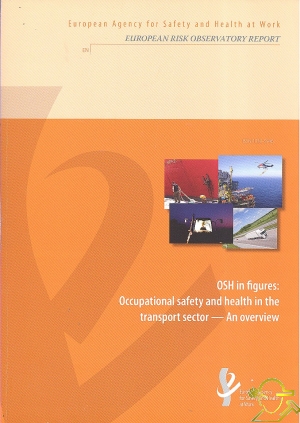OSH in figures:Occupational safety and health in the transport sector-An overview(European Rısk Observatory Report)
İÇİNDEKİLERAbbreviationsCountry codes Forevvord Summary Introduction 1. The context — employment structure and other features of the transport sector... 1.1. Employment in the transport sector and its subsectors (land (road and train), water, air)... 1.2. Gender issııes 1.2.1. Employment figures by gender 1.2.2. Gender issues in the transport sector — studies and initiatives 1.3. Distribution byage 1.3.1. Employment figures byage 1.3.2. Studies and initiatives — older transport workers 1.4. Other characteristics of the transport sector 1.4.1. Part-time work 1.4.2. Migrarıt workers in transport 1.5. Information from the Member States 1.6. Exploring the evolution of the transport sector and the reasons behind it 1.6.1. Studies to scope the European transport policy 1.6.2. SomeconsiderationsfromanOSHpointofvievv 2. Exposuretorisks 2.1. Physical work factors 2.1.1. Exposure to vibrations 2.1.2. Painful positions 2.1.3. Heavyloads 2.1.4. Exposuretonoise 2.1.5. Exposure to heat and cold 2.1.6. Exposure to dangerous substances, vapours, or fumes 2.1.7. Exposure to dangerous substances — case studies and initiatives 2.1.8. Information on risks 2.1.9. Case studies and initiatives — physical risks 2.2. Harassmentandviolence 2.2.1. Definition of violence at vvork 2.2.2. Violence and harassment in transport — an overvievv 2.2.3. Violence and harassment — data from the Member States 2.2.4. Case studies — violence and harassment 2.3. Work organisational factors., 2.3.1. Repetitive work 2.3.2. Pace of work, job control, job content and job support 2.3.3. Skills, training, information 2.3.4. Technology applications in road transport 2.4. VVorking time 2.4.1. VVorking time — length, shift vvork, vveekend vvork 2.4.2. Case studies and initiatives — vvorking time issues and vvork organisation 3. Health outcomes 3.1. Occupational accidents 3.1.1. Occupational accidents — EU figures 3.1.2. EU accident figures by gender 3.1.3. EU accident figures by age 3.1.4. Data from the Member States 3.1.5. Case studies — accident prevention 3.2. Recognised occupational diseases — EU overvievv 3.3. Occupational health problems — spotlights from the Member States 3.4. VVork-related health problems 3.4.1. Musculoskeletal disorders 3.4.2. MSDs — data from the Member States 3.4.3. Asbestos-related diseases 3.4.4. Noise-induced hearing loss 3.4.5. Fatigue and other cognitive health problems 3.4.6. Case studies and initiatives — fatigue 3.4.7. Fatigue, stress and related health problems 3.4.8. Case studies and initiatives — stress and work organisation .. 4. Legislation and policies 4.1. Transversal legislation and policies 4.1.1. Health and safety legislation and vvorking conditions 4.1.2. European transport policy 4.2. Specific legislation and policies 4.2.1. Road transport 4.2.2. Rail transport 4.2.3. VVaterborne transport 4.2.4. Air transport 5. Methodology 5.1. Surveys 5.1.1. Labourforce survey 5.1.2. Surveys on work-related diseases and working conditions 5.2. Additional sources 6. Discussion and condusions 6.1. Contextual features in transport sector (land (road and train), vvater, air) 6.2. Exposure to risks 6.2.1. Physical vvorkfactors 6.2.2. Road safety 6.2.3. Work organisation 6.2.4. Working time 6.2.5. Psychosocial factors 6.3. Health outcomes 6.4. Further research 6.5. Training 6.6. Monitoring and assessing the OSH risks to transport vvorkers : 6.7. Final considerations    |



